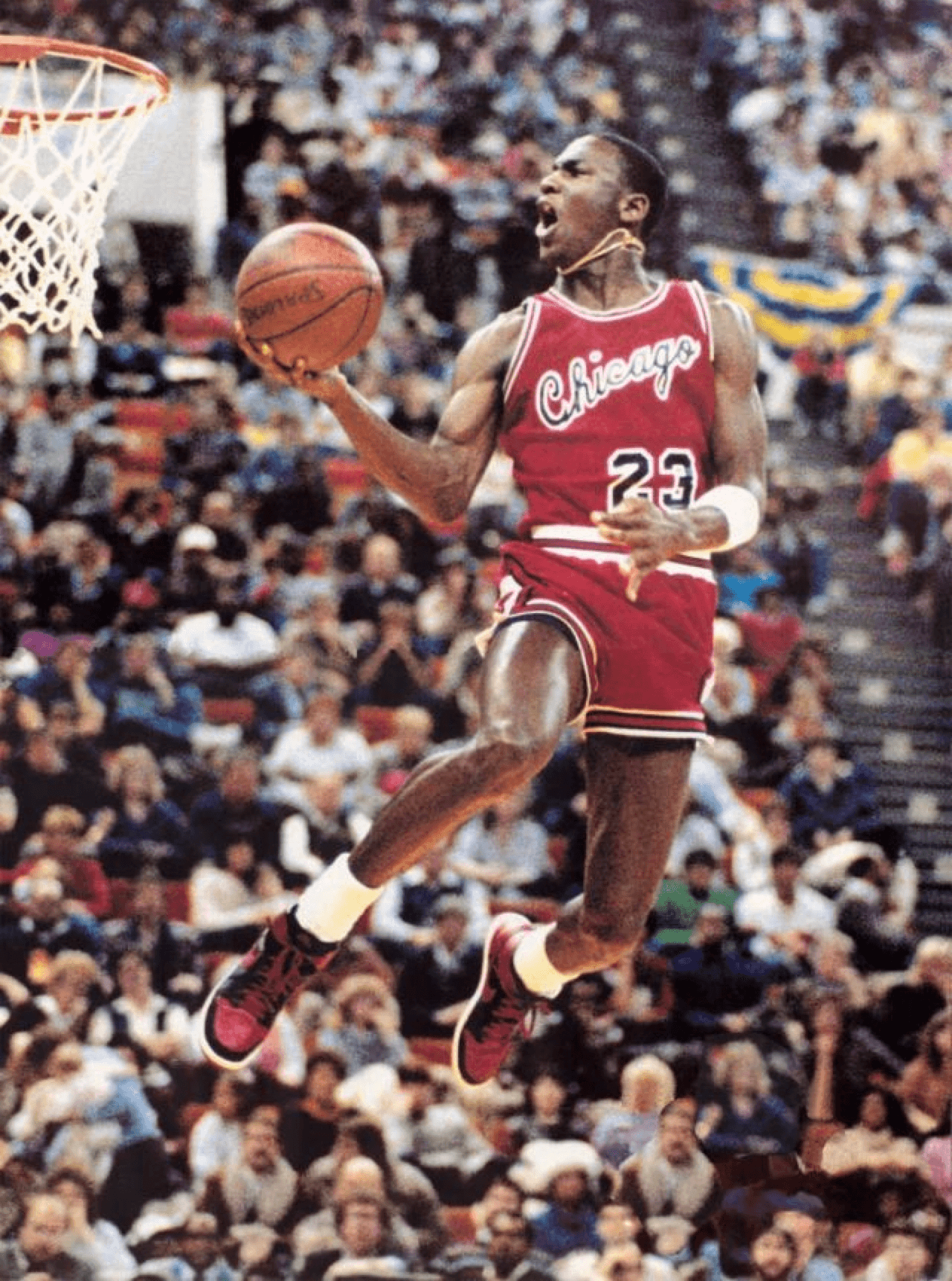A semi film review combined with historical shallow dive into Strasser’s role at Nike and the Michael Jordan heist
As a 14 year old, I desperately always wanted Air Jordans. I didn’t have a pair as they were pricey. Other kids wore theirs with a swagger and seemed to fly higher, but I had to settle for lesser brands. I was desperate to own any kind of Jordans for the B-Ball court and wear them every waking second in and outside school. After scraping together the cash, I managed to buy a bright luminous green pair on sale.
They weren’t as smart as the black and red, and one annoying kid in my class even said my pair were golf shoes – but didn’t care. I loved them. My heart still beats faster to this day thinking of those trainers. So when I saw that Matt Damon and Ben Affleck had released a movie about recruiting Michael Jordan to Nike, I settled in. Even though I had read the story, I was intrigued to see what they would make of the Jordan-Adidas heist of the century and the creation of a brand which would change the world and stand the test of time.
The plot: in 1984, Oregon-based Nike, Inc. is on the verge of shuttering their basketball shoe division due to low sales. In response, Marketing VP Rob Strasser and co-founder and CEO Phil Knight task Nike’s basketball talent scout Sonny Vaccaro to come up with a new spokesperson for Nike basketball shoes.
While considering the basketball players chosen in the 1984 NBA draft, Nike’s executives think third pick Michael Jordan is off limits, being both a fan of Adidas and too expensive for the basketball division’s meagre budget. But once he watches Jordan’s highlights in conjunction with an Arthur Ashe commercial for his Head rackets, Vaccaro becomes convinced that Nike should pursue who he considers a generational talent, with both brand and athlete building off each other.
As Oregon Live put it: “It’s an unlikely topic for a major movie. It’s about a group of businessmen struggling to develop a marketing plan. There are no guns, no superheroes, no murders, not even flesh-eating zombies.”
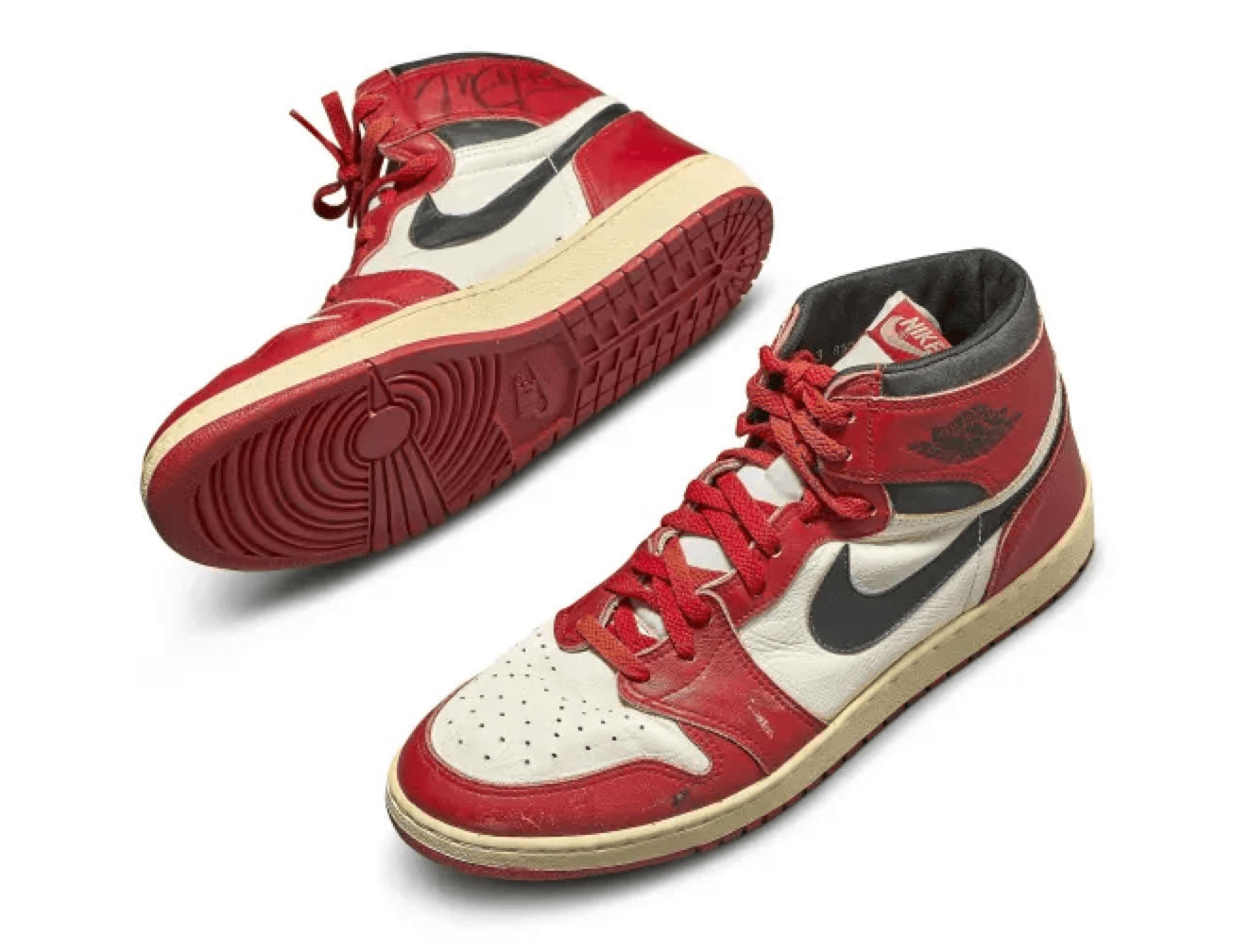
‘Air’ chronicles how Nike signed Jordan and designed the first Air Jordan sneaker. Image via Sotheby’s
A film about the creation of a global brand – what’s not to love, right? Here’s my beef. Rob Strasser, Nike’s director of marketing, is depicted as a weak marketing man. He was kind of there, but not central or even relevant. He comes across as an ineffectual character who doesn’t like taking risks as he has a seven year old daughter to take care of and a job to hold down, and he almost messes up the pitch. Jason Bateman is great as always, but the character is an afterthought. The film is really about Vaccaro, Matt Damon’s character, and his against-all-odds battle to get the deal done.
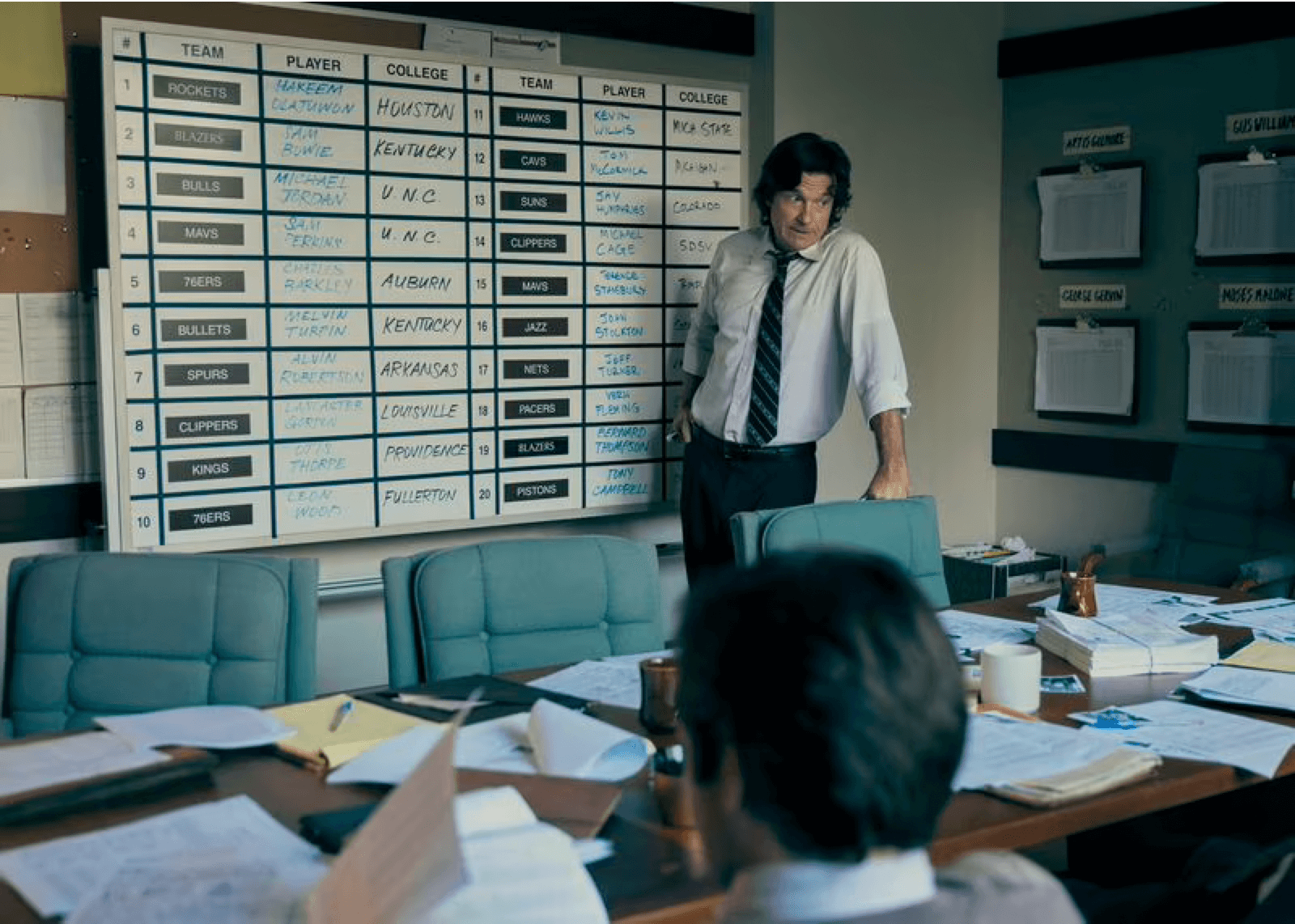
This image released by Amazon Prime Video shows Jason Bateman as Rob Strasser in a scene from “Air.” Ana Carballosa/Amazon Prime Video via AP
According to insiders, Strasser was actually brash, loud and opinionated. And most industry insiders and observers said he was the driving force in developing the Jordan campaign.
In the film, on the other hand, Strasser finds out about the epic Jordan deal from Vaccaro in a public announcement. Considering Strasser was in the pitch, this was incredibly disrespectful. According to many accounts, the reality was very different. David Falk and Strasser had a strong long-term relationship. The agent would tell Strasser about a young star, Strasser would ask Falk what he wanted for the athlete, and they’d settle on a price for the prospect to wear and market Nike gear. Nike’s top brass had seen the superstar-driven strategy work well with tennis, thanks in large part to John McEnroe.
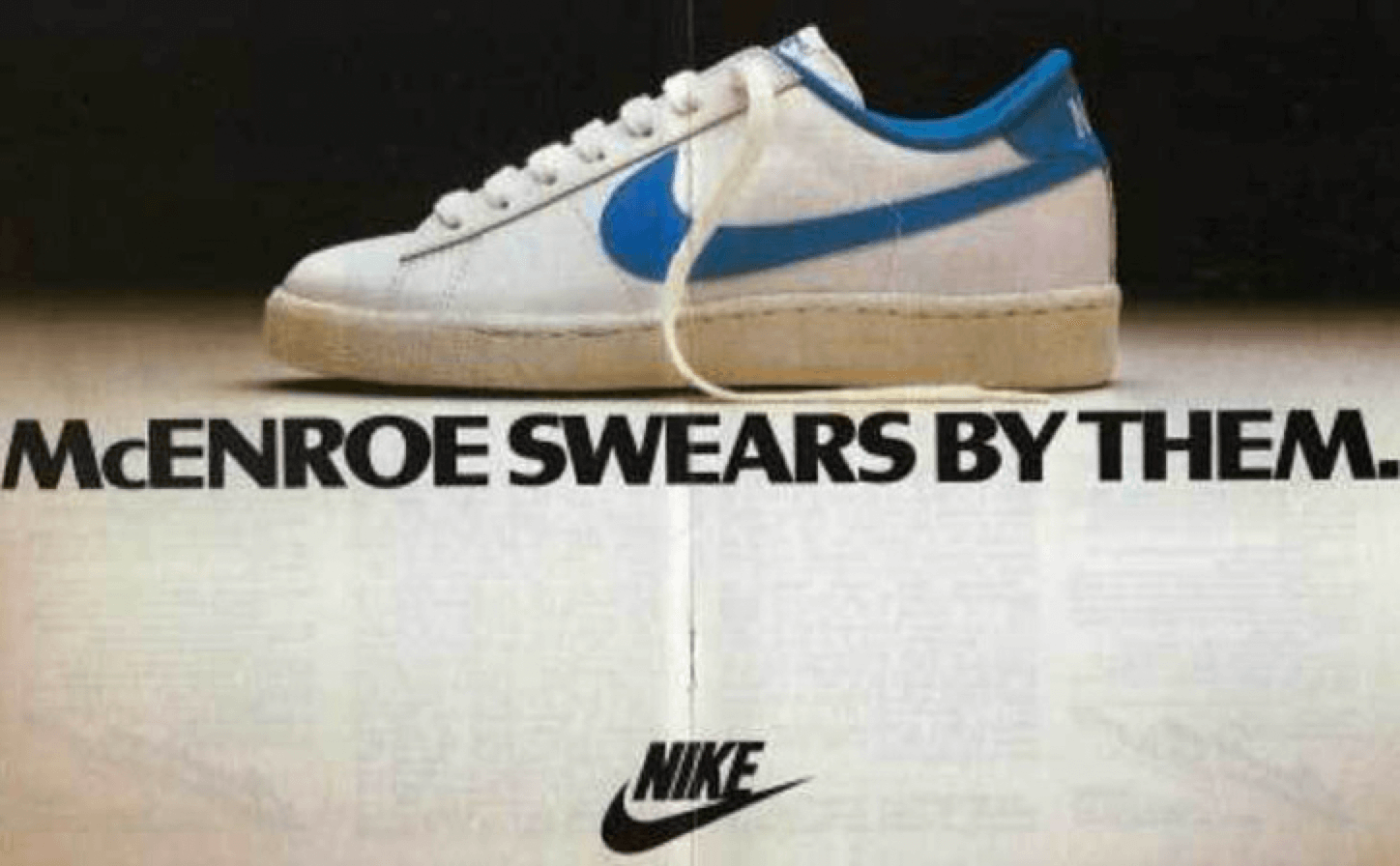
The central piece of chutzpah of the film sees Vaccaro going to the Jordan family home unannounced to clinch the first meeting.
His widow, J.B. “Julie” Strasser, who co-wrote one of the definitive accounts of Nike’s early years — “Swoosh: The Unauthorized Story of Nike, and the Men who Played There” — insists this key turning point is also wrong. It was Rob Strasser who made that trip, she said. I realise that films are inspired by true stories and that Air is not a documentary, but it feels wrong and unjust to misrepresent this sequence of events.
What is clear is that Strasser, perhaps more than anyone, believed in star power. In a 1983 memo, he wrote: “Individual athletes, even more than teams, will be the heroes; symbols more and more of what real people can’t do anymore—risk and win.”
He gets a token mention at the end of the film, giving him credit for shaping the global marketing campaign which made the world love Air Jordans. The man was a genius. His character is assassinated in the film and then is thrown some screen text as an afterthought.
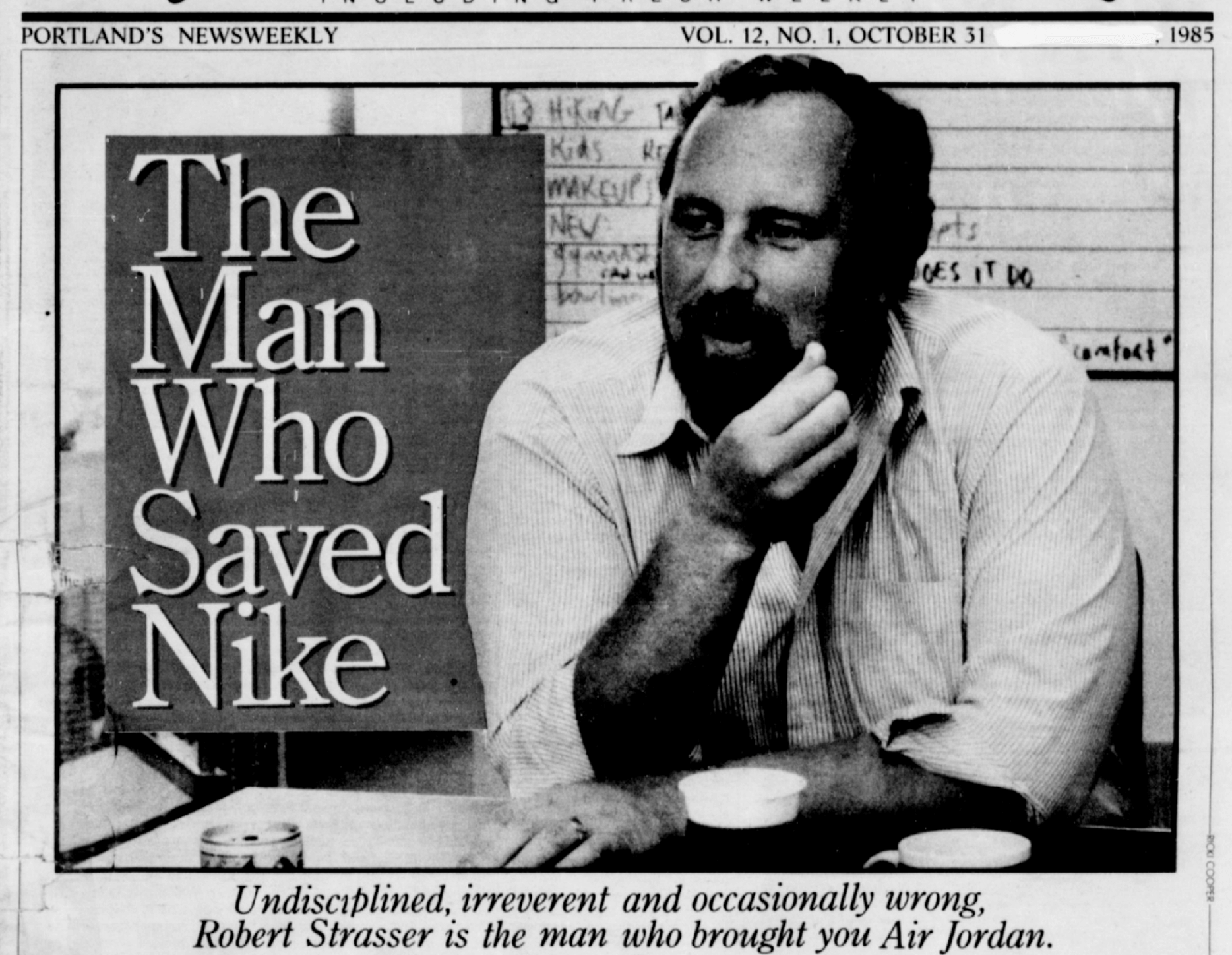
In Phil Knight’s memoir, Shoe Dog, Knight writes: “Strasser was our five-star general, and I was ready to follow him into any fray, any fusillade… his mind had been a formidable weapon.”
“Many afternoons,” writes Knight, “I’d sit around the office with Strasser, trying to figure out why some lines were selling and some not, which led to broader discussions of what people thought of us [Nike] and why…. We were more than a brand; we were a statement.”
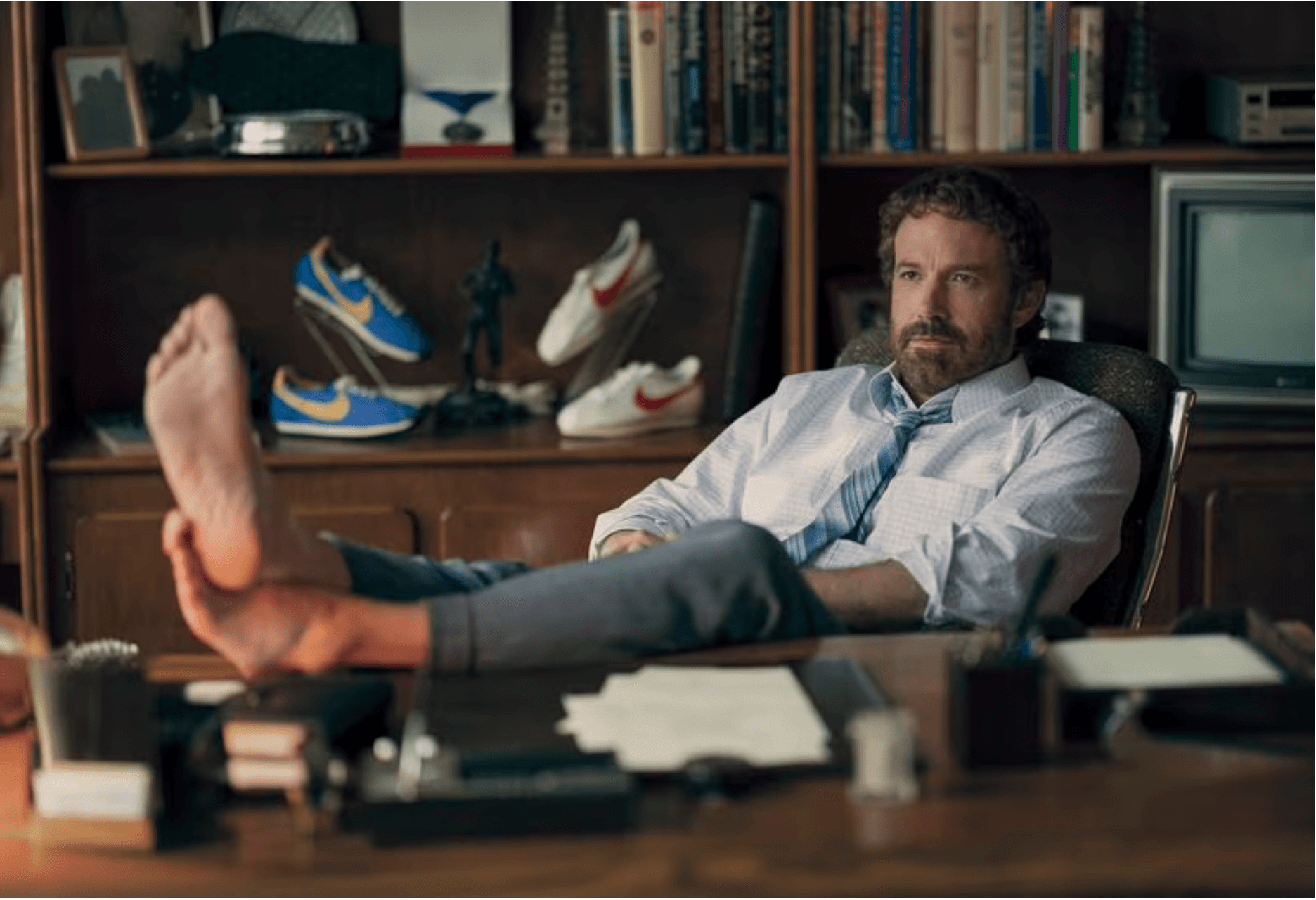
This image released by Amazon Prime Video shows Ben Affleck as Phil Knight in a scene from “Air.” Ana Carballosa/Amazon Prime Video via AP
He was dubbed the “MVP” of Nike’s turnaround in the ’80s by Phil Knight.
Sure, the revenue share of the shoe was a masterstroke which revolutionised sports marketing. However, the concept has been claimed by the agent David Falk and Jordan’s mother. Brilliant as it was, it was just the start of the story. Without the revolutionary brand marketing, would the shoes have sold at all? What share of nada would Jordan have today if it weren’t for Strasser? There were many great players of Jordan’s generation, but none came close to Jordan as a global super brand. And that’s down to Strasser.
So why sideline Strasser and minimise his role?
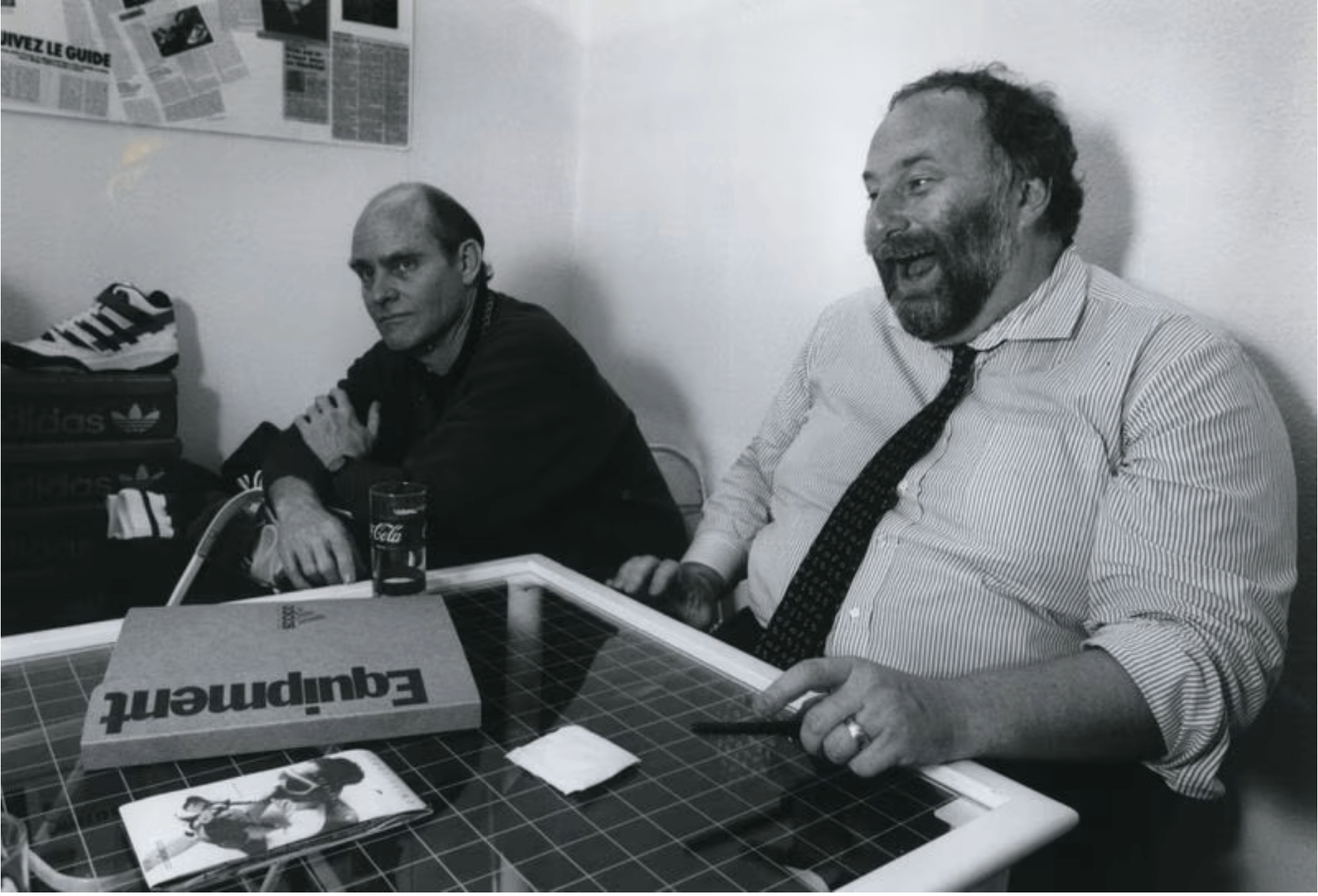
Peter Moore and Rob Strasser shown in 1993, after they had left Nike. Tim Jewett/The Oregonian (file)
One slam dunk of a reason could relate to Strasser and chief shoe designer Pete Moore quitting Nike two years after the deal to set up their own consultancy, Sports Inc. They then signed Nike archrival Adidas as a client, which fuelled an intense cross-town rivalry with their former co-workers in Beaverton.
Strasser was credited for reinventing Nike and being seduced by Adidas.
In this respect, it makes perfect sense not to give Strasser too much ‘air time’.
Having worked with Adidas and visited the HQ in Herzogenaurach, near Nuremberg, many times over the years, I have a huge soft spot for Adidas. But thinking back to the feeling I had as a 14 year old boy obsessed with Jordan, I will still always love Nike.
Apart from that, I quite liked the film. 7/10.
